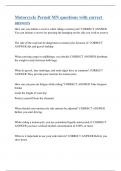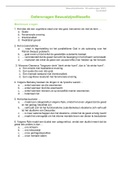Lecture notes
Inflammatory skin disorders
- Institution
- Kings College London (KCL)
These essays cover all the content of lecture 6 in Immunology of Human Disease. The first question delves into he immuno-pathogenesis of psoriasis and atopic dermatitis, highlighting their key immunological differences. There are 4 subquestions focusing on different aspects of the diseases. The sec...
[Show more]





